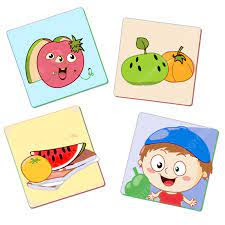1/45
What is growth in living organisms?
Growth is the increase in size, height, or amount of an organism and is unique to living things.
2/45
How does growth differ in plants and animals?
Animals grow based on species-specific patterns, while plants grow from seeds into mature forms with roots, stems, and leaves.
3/45
What are autotrophs and heterotrophs?
Autotrophs (like plants) make their own food; heterotrophs (like animals) depend on other sources for food.
4/45
What is photosynthesis?
Photosynthesis is the process where green plants use sunlight, carbon dioxide, and water to produce food (glucose) and release oxygen.
5/45
Why does a plant kept in the dark for several days become weak?
Without sunlight, it cannot perform photosynthesis to make food.
6/45
Give one example each of movement in plants and animals.
Animal: A bird flies using wings. Plant: A mimosa closes its leaves when touched.
7/45
Why is phototropism considered movement in plants?
Because it involves the plant growing towards light, even though the plant does not change location.
8/45
What is respiration in living organisms?
It is the process by which oxygen reacts with food to release energy, producing carbon dioxide.
9/45
Name the respiratory organs of Fish, Human, Insect, and Frog.
Fish – Gills; Human – Lungs; Insect – Spiracles; Frog – Lungs and skin.
10/45
How can you test that exhaled air contains carbon dioxide?
By blowing into lime water; it turns milky due to the presence of carbon dioxide.
11/45
What is reproduction?
Reproduction is the process of producing new individuals of the same species.
12/45
How does reproduction help in survival of species?
It ensures the continuation of life by producing new members.
13/45
State one method of reproduction in plants and one in animals.
Plants – Seeds; Animals – Laying eggs or giving birth.
14/45
List five key characteristics of living organisms.
Growth, Nutrition, Movement, Respiration, Reproduction.
15/45
What is growth in living organisms?
Growth is the increase in size, height, or amount of an organism. It is unique to living things; non-living things do not grow on their own.
16/45
How do animals grow?
Animals grow in size over time, but growth rates and patterns depend on the species (e.g., humans grow slowly over years; insects grow rapidly in short time).
17/45
How do plants grow?
Plants develop from a seed into a mature plant with roots, stems, leaves, and flowers, increasing in size as they age.
18/45
What is nutrition in living organisms?
Nutrition is the process of obtaining food. Plants make their own food (autotrophs), while animals get food from other sources (heterotrophs).
19/45
What is photosynthesis?
Photosynthesis is the process by which green plants use sunlight, water, and carbon dioxide to make food (glucose) in their leaves with chlorophyll, releasing oxygen.
20/45
What is movement in living organisms?
All organisms show movement. Animals move from place to place (locomotion). Plants move by growing towards light or water and may react to touch.
21/45
Give examples of animal locomotion appendages.
Legs (tiger), wings (bird), fins (fish), belly (snake).
22/45
How do plants show movement?
Plants grow toward light (phototropism), roots grow toward water (gravitropism), and some plants like Mimosa close leaves when touched.
23/45
What is respiration?
Respiration is the process where oxygen reacts with food in the body to produce energy. Oxygen is inhaled, and carbon dioxide is exhaled.
24/45
What causes the chest to move during breathing?
The chest moves up and down during inhaling and exhaling, called respiratory movements.
25/45
Name respiratory organs in different animals.
Fish - gills; Humans - lungs; Insects - spiracles; Frog - lungs and skin.
26/45
What is reproduction?
Reproduction is when a mature living organism produces new members of the same species to ensure survival.
27/45
How do plants reproduce?
Plants reproduce via seeds, cuttings, and spores.
28/45
How do animals reproduce?
Animals reproduce by laying eggs or giving birth.
29/45
What are the five main characteristics of living organisms?
Growth, Nutrition, Movement, Respiration, and Reproduction.
30/45
What is plant diversity?
Plant diversity refers to the many types, shapes, and sizes of plants found in the environment.
31/45
How are plants classified based on their nature?
Plants are classified as herbs, shrubs, trees, creepers, and climbers.
32/45
What are the morphological features used to classify plants?
Seeds, stems, roots, and leaves.
33/45
Name the plant habitats based on where they grow.
Terrestrial (land), Aquatic (water), Coastal (near the sea), Mangrove (swampy areas).
34/45
How do animals show diversity based on habitat?
Animals live in terrestrial (land), aquatic (water), or aerial (air) habitats.
35/45
What are the three types of animals based on food type?
Herbivores, carnivores, omnivores.
36/45
What are the feeding mechanisms in animals?
Chew and swallow, swallow without chewing, chew and suck.
37/45
What external features are used to classify animals?
Colour, shape, and appendages.
38/45
What are the different modes of locomotion in animals?
Walking, swimming, flying, creeping.
39/45
What is the difference in locomotion between plants and animals?
Plants are fixed to the ground and do not move; animals can move from place to place.
40/45
How do plants and animals differ in nutrition?
Plants make their own food (autotrophic/photosynthesis); animals depend on other organisms for food (heterotrophic).
41/45
Do plants and animals have chlorophyll?
Plants have chlorophyll; animals do not.
42/45
How does growth differ between plants and animals?
Plant growth continues throughout life; animal growth stops after a certain age.
43/45
Why is diversity among plants and animals important?
It adds to the beauty of nature and is essential for ecosystem balance.
44/45
What is a dichotomous key?
A dichotomous key is a tool that helps identify organisms by using a series of yes/no questions based on observable characteristics.
45/45
How does a dichotomous key work?
It divides organisms into smaller groups step-by-step, using features like the number of legs, presence of wings, or shape of beak.





.png)


